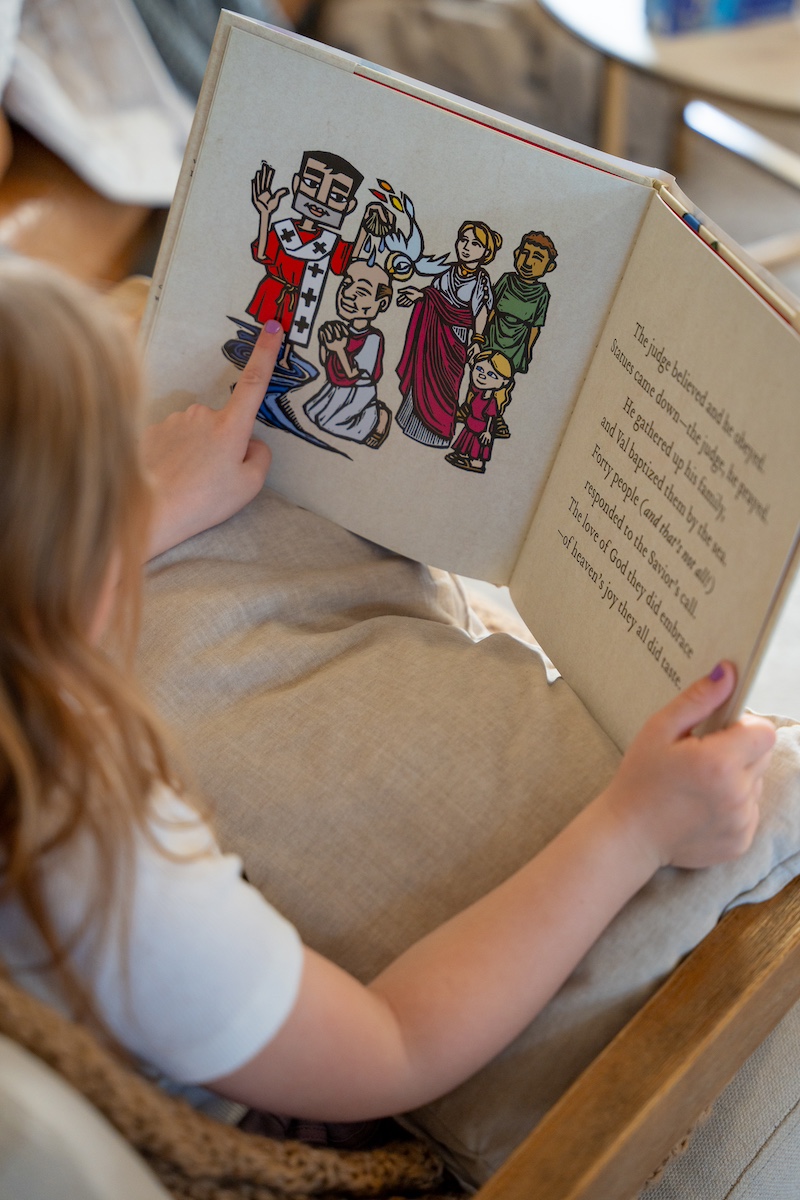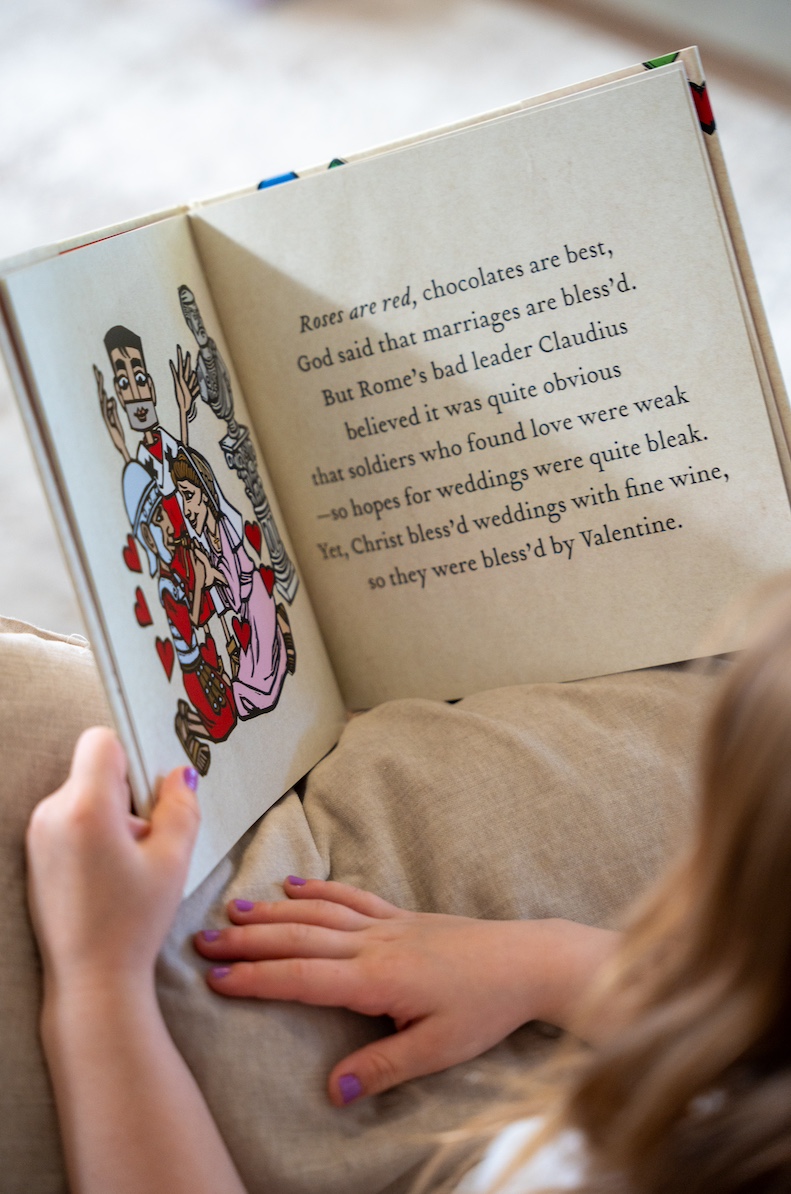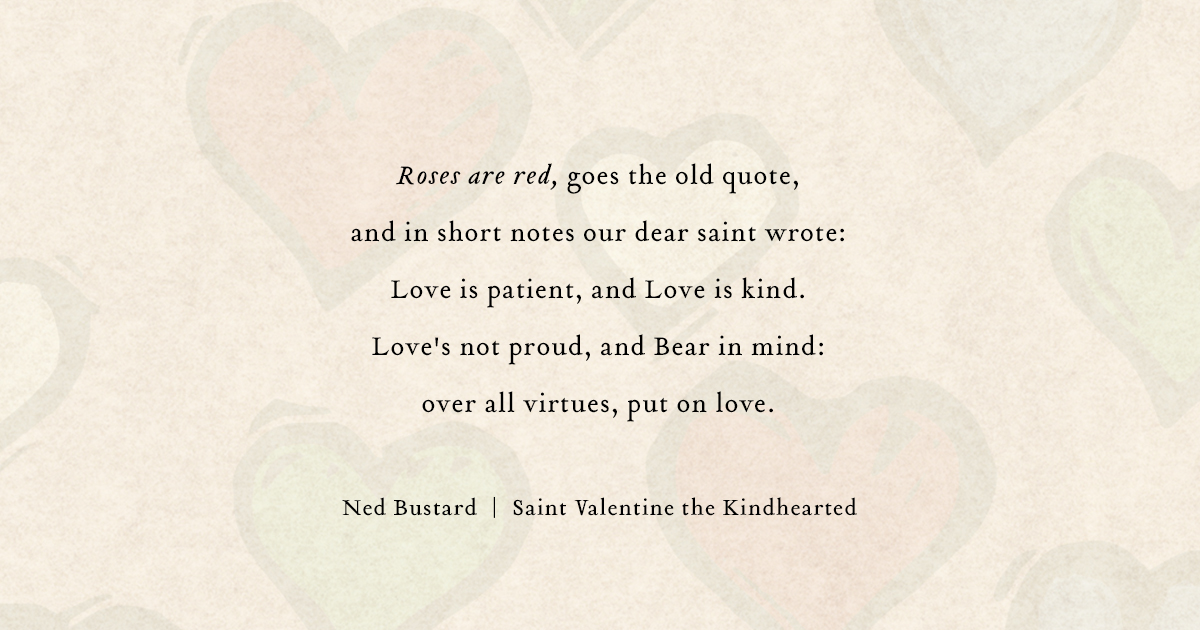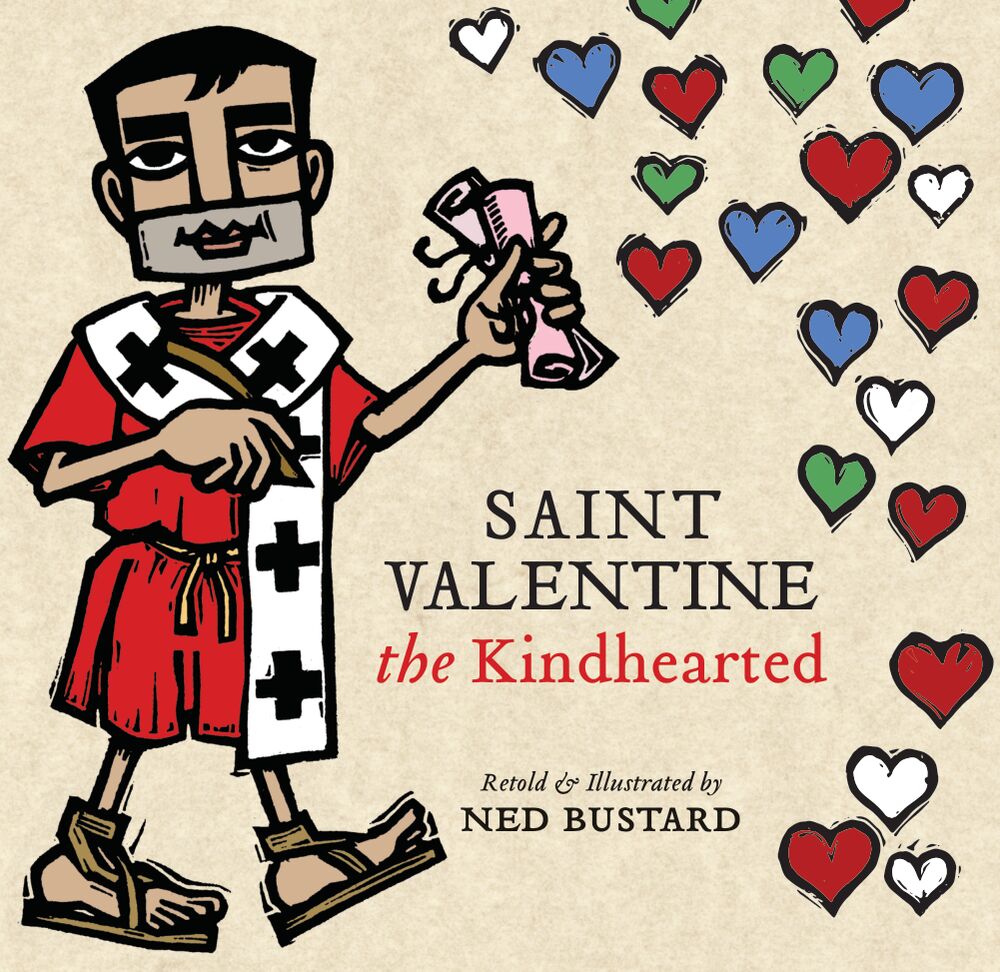Helping Children Understand Lent through the Lens of Love
By Ned Bustard, Author of Saint Valentine the Kindhearted
The Bible urges us to "love the Lord," "love your neighbor," "love one another," "love your enemies," and "love each other." In fact, love seems so core to the teachings of Jesus that it would be easy to imagine a Christian holiday in celebration of love. But Valentine's Day doesn't seem all that holy, does it? Its candy hearts, chocolates, flowers, and greeting cards seem mostly benign. But when we add in some of the portrayals of love (many of which are definitely not G-rated), along with a morass of chubby cherubs and garter belts, plus a decapitated fellow from the third century, Valentine's Day becomes disorienting at best, and at worst, something we should probably run from as fast as possible. I certainly felt this dissonance while working on Saint Valentine the Kindhearted.
In Saint Valentine's defense, his special day was not connected to romance until around 1375 when the English poet Geoffrey Chaucer wrote that February 14 is the day birds find their mates. Since that didn't give me much to go on, I decided to dig in and gather all the historical facts I could, just as I did when writing about Saints Nicholas and Patrick. Unfortunately, so little is known about Valentine that in 1969 the Roman Catholic Church actually removed him from the General Roman Calendar. He was born around 226 A.D. and was a Roman priest . . . or a physician . . . or maybe a bishop? As it turns out, Valentine was a popular name in his time, and there are at least a few Valentines who are said to have been martyred around the fourteenth of February in 269 A.D. (Yes—you read that right—martyred.)
In light of such limited historical facts about Valentine, I tried to come up with other ways to craft my tale. I figured that I could build the story on the famous "Roses are red, violets are blue," couplet, and I knew I'd incorporate some of the legends around the saint, but I couldn't get away from love. I felt stuck. How could I discuss love in a way that would make any sense to children?




Then I thought about some of the writings from my favorite "saint": C. S. Lewis. In his classic book The Four Loves, Lewis helps us recognize the expansiveness of love using four different Greek terms: eros (romantic love), philia (true-blue friendship), storge (natural love and affection, such as the love of a parent for their child), and agape (pure, unconditional love). These four loves gave me a framework for telling some of Saint Valentine's story (as much as can be known), and they also allowed me to offer a Valentine's Day story that tells of the many facets of love.
By combining the biblical message of love, Lewis's The Four Loves, and a spoonful of history and legends, I was able to offer children a love-centered Valentine's Day story in Saint Valentine the Kindhearted. Success!
And then I looked at the calendar and realized that this year—2024—February 14 has two events: Valentine's Day and Ash Wednesday.
As you may know, Ash Wednesday marks the beginning of Lent, the season of the church calendar prior to Easter. Traditionally, these weeks are focused on prayer, fasting, and repentance. At first glance, Valentine's Day and Ash Wednesday seem in direct conflict. How do we reconcile candy hearts with a season of fasting? While everything around us is draped in red and pinks and telling us to purchase extravagant jewelry, the church is draped in purple and calling people to a somber season of lament.
But what if Lent is actually the best time to talk about love?
Yes, the birth of Jesus means that "Love Came Down at Christmas," as Christina Rossetti wrote (and Jars of Clay sang in such a groovy way back in 2007). And on Easter, we rejoice that Jesus' resurrection means that love overcame death. But in between is Lent, and as far as love goes, Lent is where the rubber meets the road.
On the evening prior to the crucifixion, Jesus offered this beautiful exhortation to his disciples: "Love each other as I have loved you" (John 15:12). And then he followed it with an articulation of the extent of his love—the lengths he was willing to go for love: "Greater love has no one than this: to lay down one's life for one's friends" (John 15:13). And that is exactly what he did.

This is the love that we can talk to children about on Valentine's Day—a love that gives so much that it literally fulfills the oft-stated declaration of "I'd die for you." The collision of Valentine's Day with Ash Wednesday this year is a helpful reminder for us to view all of Lent through the lens of love. In fact, the only way to make sense of any of it—prayer, fasting, repentance, lament, forgiveness, sacrifice—is in the light of love.
Lent can prompt us to reflect on this remarkable love, and consider how God has loved us. And when we better understand God's love for us—the selfless, pure, and unconditional agape love—we become better equipped to have conversations with children about the life, death, and resurrection of Jesus.
This year, I hope that Valentine's Day, Ash Wednesday, and Lent prompt wonderful conversations with children about the magnificent love of God!





